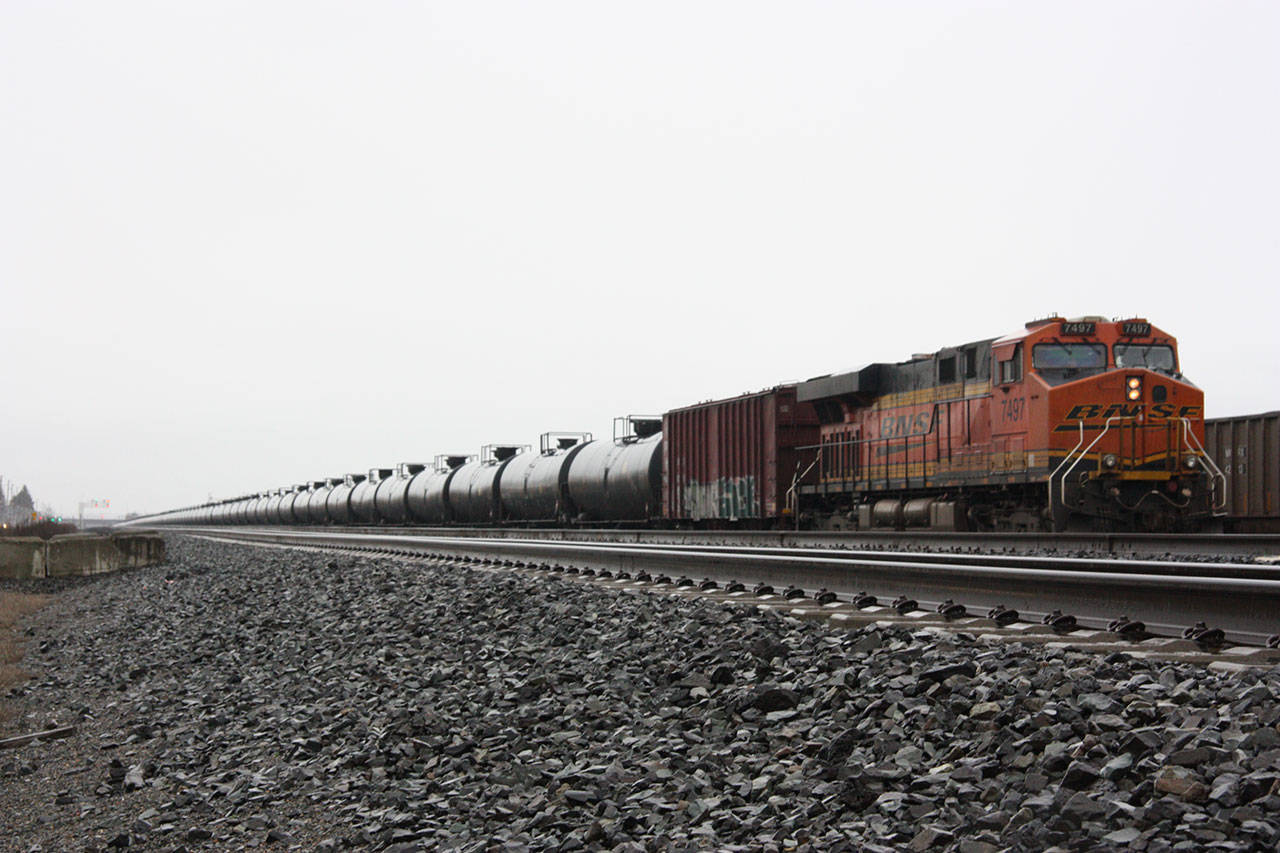A new study outlines what it could take to resurrect an east-west rail corridor from King County to Spokane.
It’s not an unfounded plan. Up until 1981, passenger trains traversed Central Washington through Stampede Pass from Puget Sound, arriving at destinations across Eastern Washington. But that service was shifted northward to Stevens Pass.
Since then, there have been studies and assessments on bringing the service back. The new study from Steer, delivered to the Washington State Joint Transportation Committee, shows returning passenger trains to the route — now owned by BNSF and used for freight — would come with a hefty price tag and relatively low ridership numbers.
Infrastructure costs depend on the size of the trains, whether the line would run all the way to Spokane or stop in Central Washington, and how many daily trips it would make. Estimates in the study range between $300 million to $400 million, not including between $15 million to $30 million in annual operating costs.
Ridership estimates start at 192,000 annual trips from Seattle to Spokane, and increase if more daily trips are added. It would take about eight and a half hours to reach the Inland Empire from Puget Sound — about three hours more than driving.
But other rail services currently have similar ridership numbers too. Amtrak’s State Supported services like the North Carolina Charlotte to Raleigh Piedmont line, which has three daily trips, had 212,000 annual trips during fiscal year 2018-19.
And if the Washington state route were able to reduce travel time by one hour, by improving and straightening the rail, it could increase annual ridership by 10,000. At stakeholder meetings, more than 70 percent of participants said they would try the rail service.
The study marks a milestone in a grassroots push to bring the service back. Former Washington state Rep. Luis Moscoso has been involved with rail advocacy both during his time in office, and since, as part of All Aboard Washington.
“If we’re going to have a statewide train network as we said we wanted, then it’s long overdue,” Moscoso told this paper last December.
There are currently two east-west lines of Amtrak’s Empire Builder train. One goes north through Leavenworth to Spokane. A southern line runs from Spokane through Pasco along the Columbia River. There’s also the Amtrak Cascades that runs north-south along the I-5 corridor.
A feasibility study of ultra-high-speed trains between B.C. and Portland found that the Auburn-Spokane connection through Central Washington could increase ridership on that north-south line by up to 25 percent.


